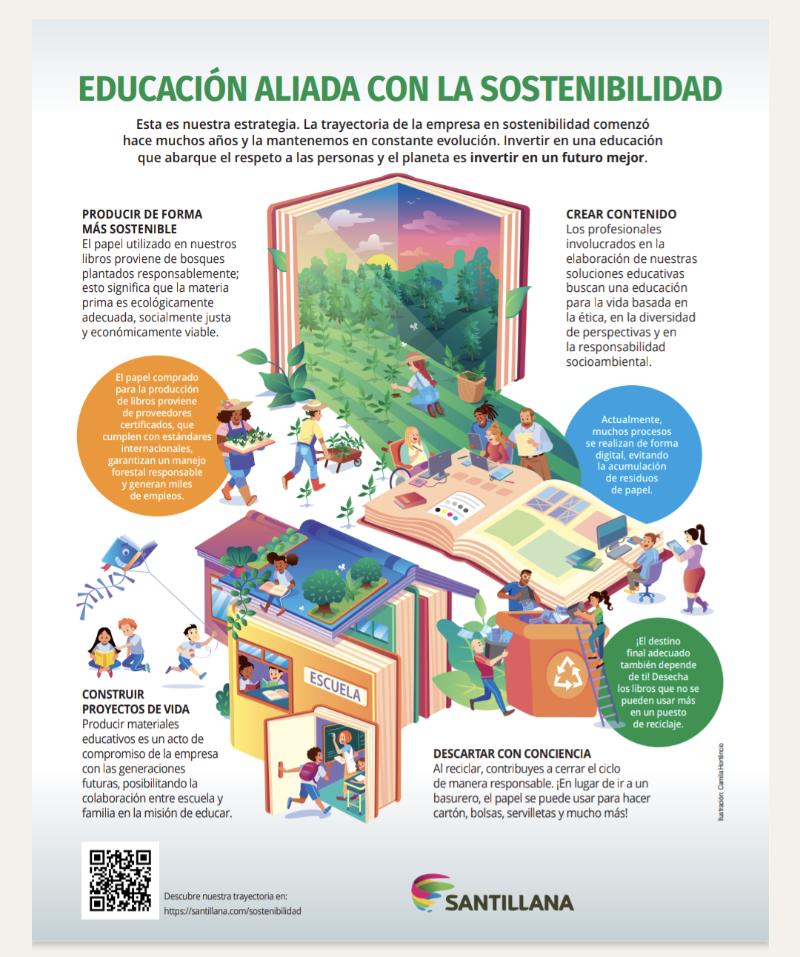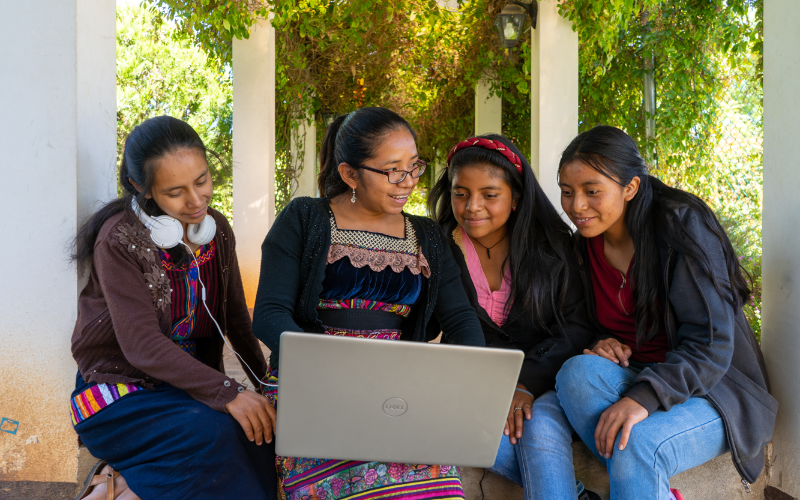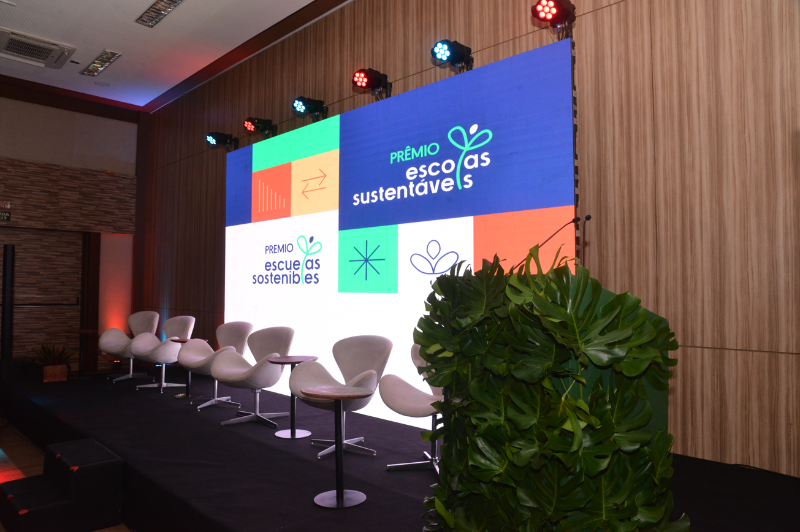
Infographic about the book Lifecycle
Santillana has created an educational infographic, included in all its printed books, which explains the product lifecycle, a process in which sustainability is a constant priority for the company: since the beginning of the product chain, with the purchase of certified paper, until the end of its lifecycle, with an invitation to recycle. Sustainability is everyone’s responsibility, that is why Santillana encourages the reader to be part of the process.



